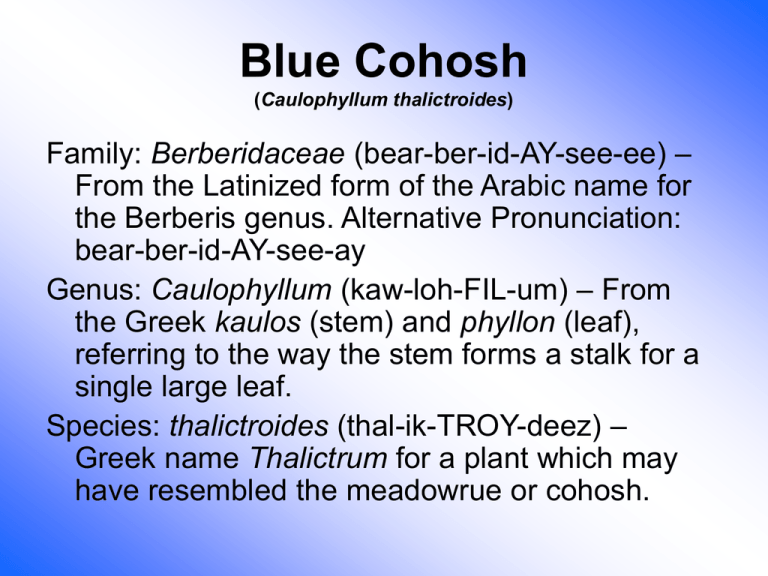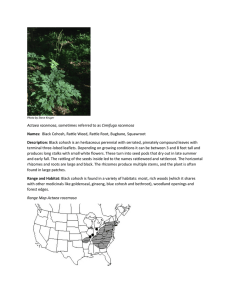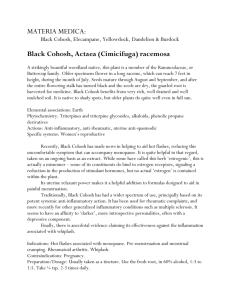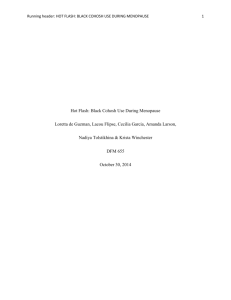Blue Cohosh (Caulophyllum thalictroides)
advertisement

Blue Cohosh (Caulophyllum thalictroides) Family: Berberidaceae (bear-ber-id-AY-see-ee) – From the Latinized form of the Arabic name for the Berberis genus. Alternative Pronunciation: bear-ber-id-AY-see-ay Genus: Caulophyllum (kaw-loh-FIL-um) – From the Greek kaulos (stem) and phyllon (leaf), referring to the way the stem forms a stalk for a single large leaf. Species: thalictroides (thal-ik-TROY-deez) – Greek name Thalictrum for a plant which may have resembled the meadowrue or cohosh. Blue Cohosh Blue cohosh is named for its bluish stem and dark blue berries. Other common names for this native plant include caulophyllum, papoose root, squawroot, blueberry root, blue ginseng, yellow ginseng. It is in the barberry family. It is an erect perennial which can be from 30 to 90 cm tall. In Altona Forest it can be found along Petticoat Creek and in some places in the deciduous sections. Blue Cohosh The bluish green leaves consist of 3 to 5 oblong leaflets which also may be divided into 2 to 5 lobes near the tip. Future location of photo. Blue Cohosh During early growth, the plant is covered with a bluish-green bloom which slowly disappears. The small slightly greenish yellow flowers bloom in clusters at the tops of the stems usually in April and May before the leaves are fully open. Flowers are about 1 - 1.5 cm across. The root has been used as a remedy for menstrual disorders. The small round seeds, which ripen in August, are borne on stout stalks and resemble dark-blue berries. The fruit is poisonous. To Return to the Plant List Click on the Trout Lily Below To end this program click on this box.











